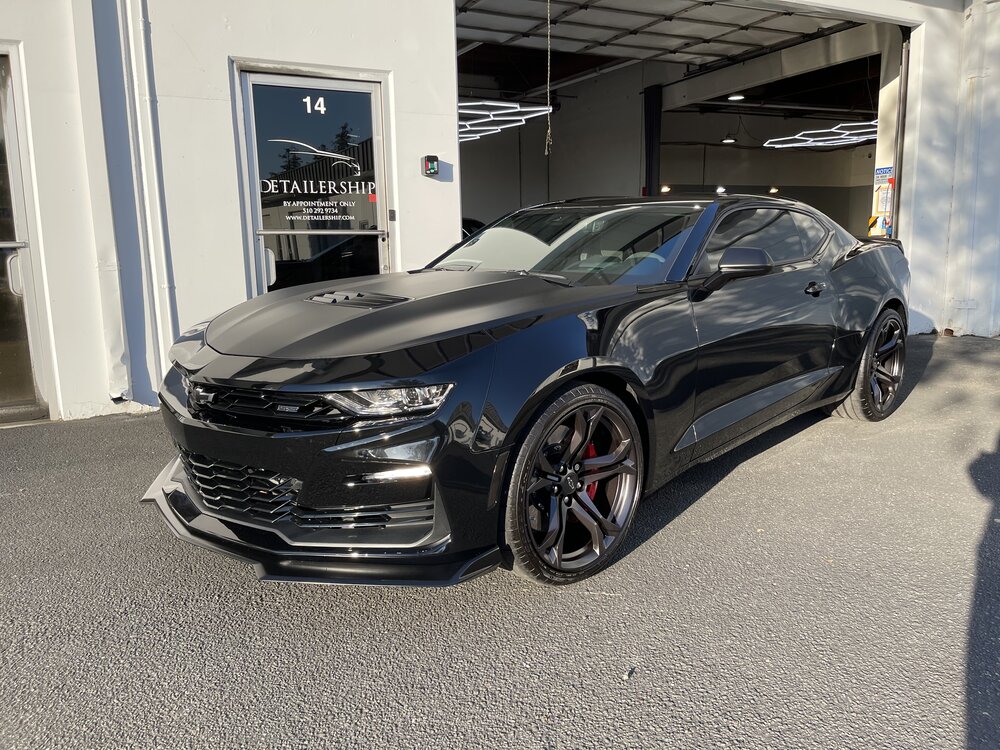
Grand nationals are a race designed to show off America's finest muscle cars. These two vehicles are the Chevrolet Impala SS 409 and Chevelle SS 444. Each car has a 6.2-liter, V8 engine producing 415 horsepower. Inside, you'll find comfortable sport seats and the SS logo. The SS logo, which is a distinct part of every car's design and one of the most famous symbols of Grand National, is found inside.
Chevrolet Impala SS 409
The Chevrolet Impala SS had a small-block engine. This engine was the very first to be featured in a Chevrolet sedan with front-wheel drive since 1996 Caprice. This engine produced 303 horsepower. It was also equipped with Active Fuel Management. The SS was a luxury sportscar with an athletic look that allowed drivers to experience a broad range of driving functions. It was available as either a 2-door convertible or coupe.

Grand National muscle cars
The Buick Grand National is one of the most iconic American muscle cars. The 3.8-liter turbocharged V-6 engine put Corvettes to shame. It was also equipped with an automatic transmission, making it a great muscle car. Although the Buick GNX did not live up to its true muscle car status, it was still one among the most desirable Buick models since the GNX era. Even more expensive, it is still hard to find one after thirty years.
Chevrolet Chevelle SS 454
The 1972 Chevrolet Chevelle SS featured a very unique instrument cluster. The standard instrument cluster contained a speedometer as well as a large fuel gauge. It was accessible through a small opening. A tachometer was added to the special panel. The fuel gauge was moved to the outside edges of the instrument panel. Stereo Stripes or Quad headlights could also be an option.
1970 Chevy Chevelle SS
The 1970 Chevy Chevelle SSS interior is reminiscent the 1960s muscle car with its bench seat design and central console. Despite the similarities, the 1970 Chevelle SS stands out with its larger, circular gauges, and lower valance. Its chrome bumpers are optional and add flair and character. This car truly embodies classic muscle car styling. These are the main features of the 1970 Chevy Chevelle SSS:
1969 Dodge Charger
In 1968, the Dodge Charger was a famous muscle car. It was time to make it mainstream. Famed designer Richard Sias designed the Dodge Charger, an hourglass-shaped beast with a broad stance. The 1969 Dodge Charger was a two-door hardtop with a wheelbase of 117 inches and a length of 208 inches. It sold 96.100 vehicles. An optional road/track performance package was also available.

1969 1/2 Dodge Super Bee A-12
This is the iconic muscle car of all time. This car is an incredible example. The car was manufactured between 1968 and 1971. It featured three Mopar V8 Engines. The Magnum, 7.2-liter Six-Pack and legendary 7.0-liter Hemi models were available. This particular car, while rare, features a supercharged Ramcharger motor and front wheel drive.
FAQ
Is a career in automotive mechanic promising?
There are many exciting opportunities in the automotive industry for people who are driven to achieve excellence. The best way to succeed in this field is by working hard and learning as much as possible from others.
You'll need to have excellent communication skills because you'll spend most of your time talking to customers and other employees. You will need to be able and willing travel for work, making it more difficult to commute.
You can take classes at universities and community colleges if you are interested in a career as an automotive technician. Many schools have programs that are specifically tailored for students who are interested in automotive sales, repair, and customer service.
You should choose to study mechanical engineering if you want to get a degree. It's possible to get a bachelor's degree in just four years.
Many companies will hire students straight out of college. You should start looking for employment as soon as you are able to continue your studies part-time.
After your education is complete, you will probably need some training in order to become an automotive technician.
This means you'll need to pass exams such as the Automotive Service Excellence (ASE) certification exam. This test covers engine maintenance and brakes as well as suspension.
After passing the ASE test you can apply for a National Institute for Automotive Service Excellence (NIASE) license.
A license permits you to repair private vehicles. Based on the services rendered, you will receive compensation.
Not all states require licensing. If you intend to work in another state, however, you will need a license.
Some states don't issue licenses until after completing a certain amount of training. If you are one of these people, you might need to look for another alternative.
To work as an automotive mechanic, do I need a degree? What about part-time study?
A degree isn't necessary, but it certainly helps. Most employers prefer candidates who have studied for a full degree rather than those who haven't. This shows you have put in the work and achieved success.
You can still study while working, however. Some universities allow students the flexibility to finish coursework during summer vacations and resume their studies later in year. Some universities allow students to take part-time classes throughout the year.
How do I prepare to be a mechanic apprentice?
It is important that you understand the ramifications of your actions. You must understand the workings of cars. This will help you to plan your first day in the garage.
You will also need to learn how to fix simple problems like tires and broken lights.
This will teach you how to diagnose problems and fix them yourself.
You'll also need to know how different parts fit together to put them back together again.
Finally, you should be able use tools safely.
These are all things that will make you a competent mechanic.
Is it hard to be a mechanic apprentice?
Although it's not an easy task, you will learn quickly and have many opportunities to advance.
You will need patience and perseverance. You will also need to be able fix cars, trucks and motorcycles.
Customers and family members can put a lot pressure on you. They want you to succeed. You should not feel pressured into making difficult decisions.
If you like fixing cars, this could be a great career option. This is a job that allows you to earn a decent income and grow your business.
However, you might prefer to go down another route. If this is the case, you might want to become a technician.
This could involve using your technical knowledge to support other employees. You could help technicians troubleshoot problems or teach them new techniques.
Another option is becoming a service advisor. As a service advisor, you will provide assistance and advice to customers as they bring their car to a garage.
It all depends on your goals. There are many options to choose from, and it is up to you which one suits you the best.
Statistics
- According to the BLS, the median annual salary for automotive service technicians and mechanics in the United States was $44,050 in May 2020. (uti.edu)
- The U.S. Bureau of Labor Statistics (BLS) reports that the job outlook for automotive service technicians and mechanics is expected to decline by 4% from 2019 to 2029. (indeed.com)
- There were 749,900 jobs available for automotive service technicians and mechanics in 2016, which is expected to grow by six percent through 2026. (jobhero.com)
External Links
How To
How to properly diagnose your vehicle for repair
You should first examine the symptoms your car is showing to determine if it requires repairs. Follow these steps to properly diagnose your vehicle.
-
Check engine lights. Make sure to check all dashboard indicators like the engine light indicator (oil pressure gauge), the battery indicator (battery light indicator), and the RPM indicator (rpm gauge). It could indicate that your vehicle is having problems.
-
Inspect the tire treads. Tire wear can lead to problems in handling and brake performance. The treads of the wheels should be inspected as well. You should ensure that they are clean and smooth. The best way to do this is to remove the wheels and take them off. A flashlight can be used to check how worn the treads are.
-
Check the level of brake fluid. You should always keep track of the amount of brake fluid in your vehicle. You can ensure that your brakes are working properly by monitoring the level of brake fluid in your vehicle. If the brake fluid level is low, your brakes might fail when you apply pressure to them.
-
Check the suspension system. A suspension system is designed to absorb vibrations and shocks. It allows for better control, smooth acceleration, and deceleration. If your vehicle has a suspension problem, it might feel wobbly or shake uncontrollably. To test whether your vehicle has a suspension issue, try putting weight on the front or rear axle and observe the movement.
-
Examine the steering column. The steering columns are what connect the steering knob to the rest. Steering columns can be damaged by accidents. If yours feels loose or shaky, you should replace it.
-
Observe the exhaust pipes. Exhaust pipes help move gases from the combustion chamber to the atmosphere. If your exhaust pipe leaks or cracks, it will allow harmful fumes into your cabin. You should also fix any bent tailpipes immediately.
-
Take a look under your hood. Take a look underneath the hood to find any strange or unusual items. Fluids could be leaking from your engine. You should also contact a professional technician if there is an unusual odor coming from the engine compartment.
-
Check the air filter. The outside environment collects dust and other particles in the vehicle's filter. A dirty air filter causes your vehicle to run poorly. Replace your air filter regularly.
-
Verify the fan belt. The fan belt is the link between the engine and the transmission. If the fan belt fails, the engine won't start. It's easy to replace the belt. All you need is a screwdriver and some pliers.
-
You should inspect the radiator and hoses. The radiator-hose carries water to the engine. It can crack or become damaged and leak hot liquid onto an engine. To repair the leaky hose, all you need is a pair if needle-nosepliers.
-
You should inspect the windshield wipers. Windshield wipers use electricity to remove snow and rain. If they stop working, they could leave streaks on your window glass. You can fix the problem by changing the washer fluid.
-
The battery cables should be checked. The battery cables provide power for the electrical systems in your car. Make sure you disconnect the negative cable before replacing batteries. Failure to do so can damage your alternator.
-
Check the headlights. The headlights will illuminate the road ahead. If they don't work properly, it can cause poor visibility. You can check the bulbs to make sure they aren't burned out.
-
Make sure you have your lights on. If you approach other drivers at night, lights will warn them. You could be distracted and cause an accident if one does not work.
-
Check the brakes. Before you collide with another vehicle, brakes will slow down the car. If the brakes fail to work correctly, your car could lose control and collide with another vehicle.
-
Change your oil. Keep your engine lubricated with oil. This oil helps to prevent metal parts becoming too worn out. It is recommended to change the oil each month.